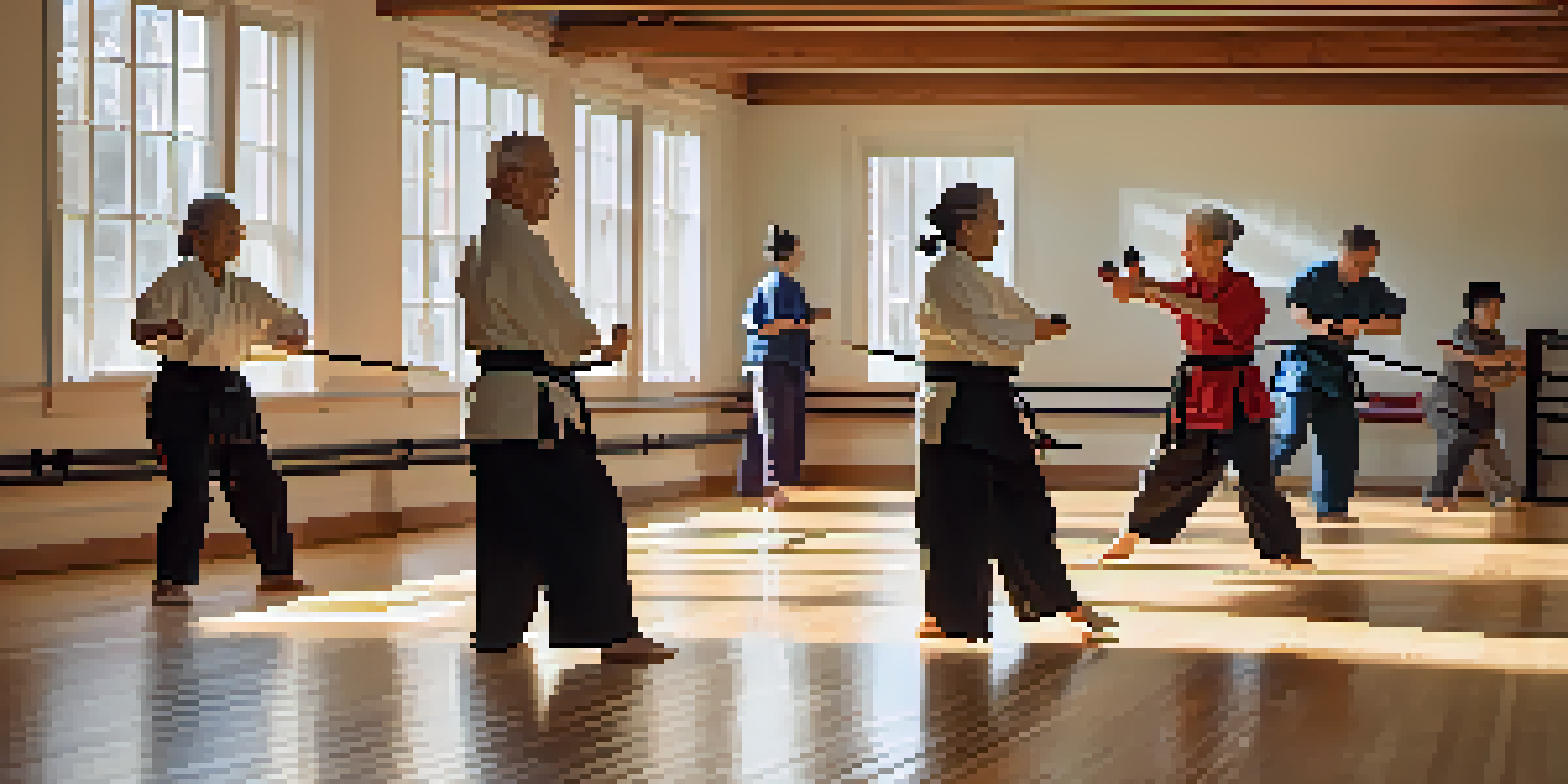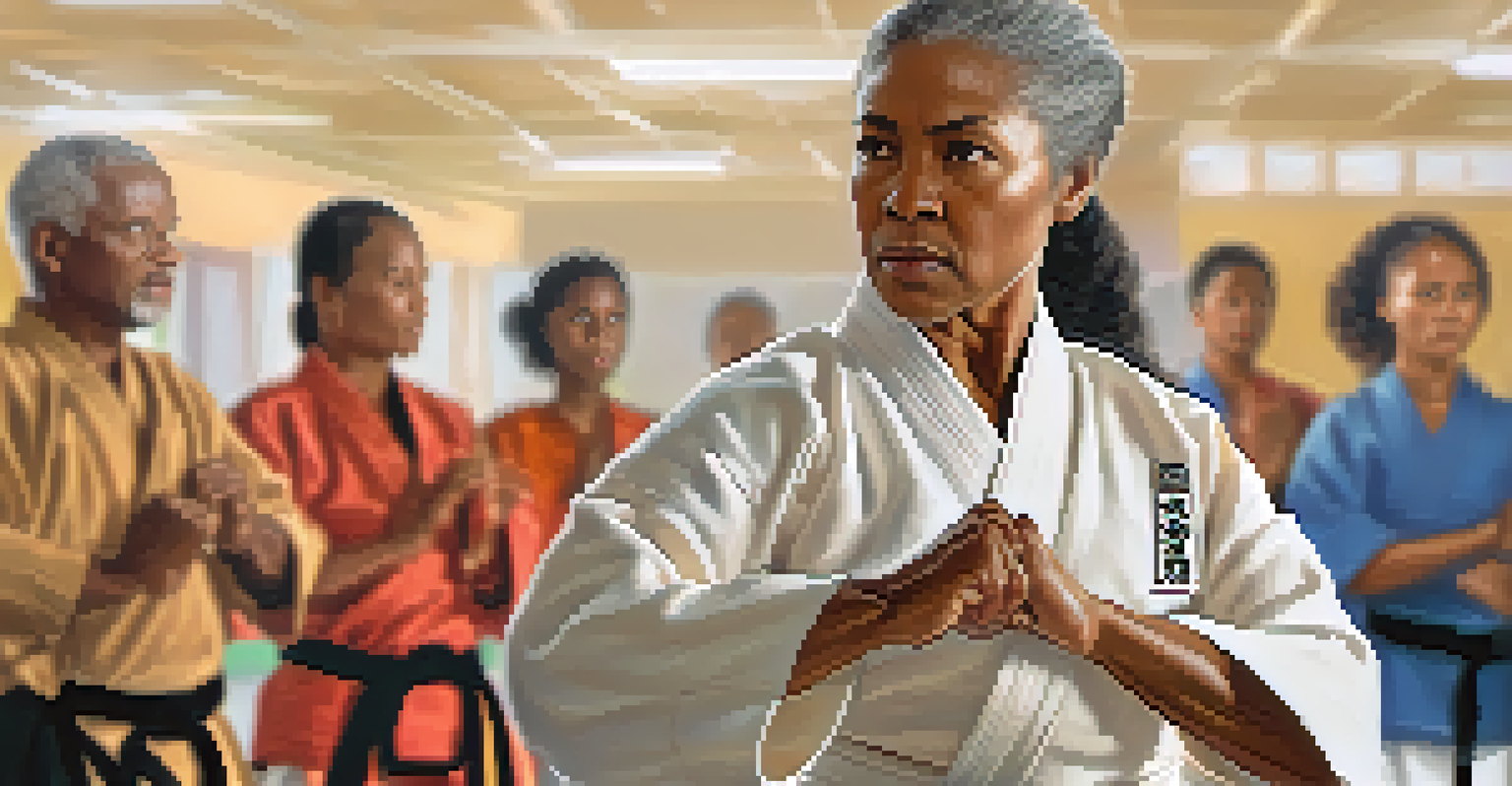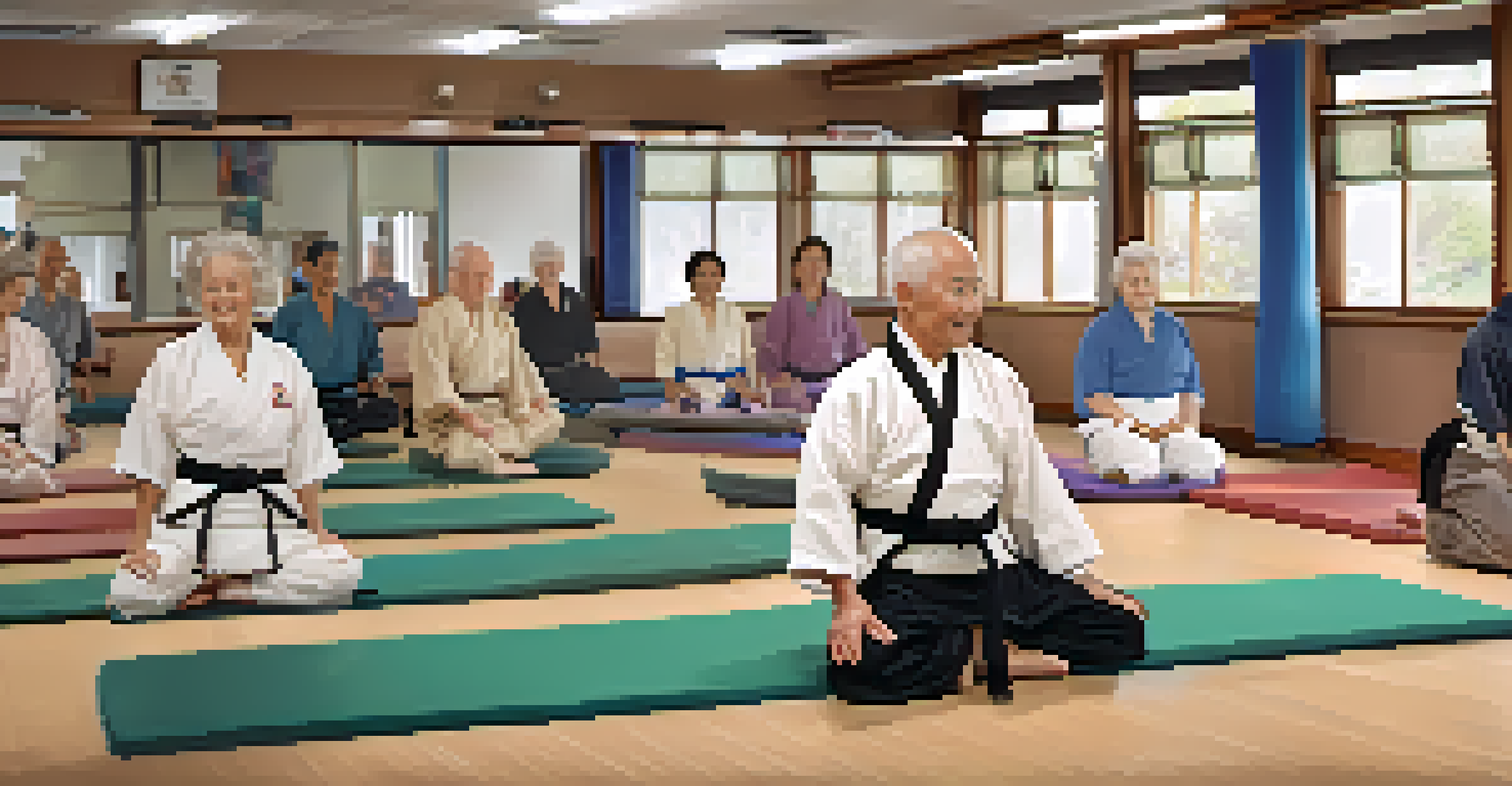Adapting Martial Arts Techniques for Older Adult Safety

Understanding the Unique Needs of Older Adults in Martial Arts
Older adults often face physical limitations that younger practitioners do not, such as reduced flexibility, balance issues, and joint pain. Understanding these unique needs is essential for creating a safe and effective martial arts practice. Tailoring techniques to accommodate these challenges can foster a more inclusive environment, allowing seniors to enjoy the benefits of martial arts without risking injury.
The greatest weapon against stress is our ability to choose one thought over another.
For instance, many traditional stances and movements may require modifications to reduce strain on the knees or hips. Instructors should focus on low-impact techniques that promote strength and flexibility while ensuring that participants feel comfortable and confident in their movements. This approach not only enhances safety but also encourages older adults to engage more fully in their training.
Incorporating a gradual progression in training intensity can further help accommodate varying fitness levels. By recognizing and respecting the physical capabilities of older adults, martial arts can become a viable option for improving their overall health and well-being.
Essential Modifications for Common Martial Arts Techniques
Certain martial arts techniques can pose risks if not modified for older adults. For instance, high kicks or complex footwork might lead to falls or strains. By modifying these techniques to focus on lower, controlled movements, older practitioners can still reap the benefits of martial arts while minimizing the risk of injury.

In addition to lowering kicks, simplifying hand strikes and incorporating more defensive postures can also enhance safety. For example, using open-handed techniques instead of closed fists can reduce the chance of hand injuries. The goal is to adapt movements that maintain the essence of martial arts while ensuring they are accessible and safe for seniors.
Tailored Techniques for Seniors
Modifying martial arts techniques ensures older adults can safely participate while still enjoying the benefits of training.
Moreover, instructors can introduce props such as balance bars or mats to provide additional support. These adaptations not only help with physical safety but also boost the confidence of older learners, allowing them to enjoy martial arts as a form of self-expression and fitness.
Incorporating Warm-Up and Cool-Down Routines
Warm-up and cool-down routines are crucial components of any martial arts practice, especially for older adults. These practices help prepare the body for physical activity and promote recovery afterward. A well-structured routine can significantly reduce the chance of injury by gradually increasing flexibility and blood flow to the muscles.
As we age, we begin to appreciate the small things in life and the importance of community and connection.
Warm-ups should focus on gentle stretching and mobility exercises that target key areas like the hips, shoulders, and back. For instance, simple neck rolls, arm circles, and ankle rotations can effectively warm up the body without overwhelming it. Similarly, cool-down routines should involve light stretching and deep breathing to help muscles relax and recover.
Encouraging seniors to include these routines in their practice not only enhances their safety but also fosters a more mindful approach to training. It creates an opportunity for self-awareness and reflection, which can be particularly beneficial in martial arts.
Fostering a Supportive Community in Martial Arts Classes
Creating a supportive community is vital for older adults participating in martial arts. A welcoming environment where participants feel comfortable and valued can enhance their experience significantly. Encouraging camaraderie among older practitioners can lead to increased motivation and a sense of belonging.
Instructors can facilitate this sense of community by organizing group activities, such as partner drills or team challenges. These collaborative exercises promote social interaction and help participants build trust and support with one another. A positive social dynamic can make martial arts classes more enjoyable and engaging.
Community Support is Key
Fostering a supportive environment in classes enhances motivation and helps older adults feel valued in their martial arts journey.
Additionally, celebrating individual achievements, no matter how small, can further foster a supportive atmosphere. Recognizing progress can instill a sense of accomplishment and encourage older adults to continue their martial arts journey, knowing they are part of a caring community.
Understanding the Benefits of Martial Arts for Older Adults
Martial arts offer numerous physical and mental benefits for older adults. Engaging in martial arts can improve strength, flexibility, balance, and coordination, all of which are essential for maintaining mobility as we age. These benefits can lead to a lower risk of falls and injuries, contributing to a healthier lifestyle.
Beyond the physical advantages, martial arts also promote mental well-being. Regular practice can enhance focus, discipline, and stress relief, which are particularly valuable for older adults facing the challenges of aging. The mind-body connection fostered through martial arts can lead to improved self-esteem and a greater sense of purpose.
Ultimately, the holistic benefits of martial arts can empower older adults to take control of their health and well-being. By adapting practices to suit their needs, they can enjoy a fulfilling and enriching martial arts experience.
Safety Precautions for Older Adult Martial Arts Practitioners
Implementing safety precautions is essential when adapting martial arts for older adults. Instructors should conduct thorough assessments of each participant's physical condition, taking into account any pre-existing health issues or limitations. This personalized approach ensures that training is tailored to individual needs, minimizing risks.
Additionally, maintaining a safe training environment is crucial. This includes using appropriate mats, ensuring adequate space for movement, and removing any potential hazards from the practice area. Instructors should also emphasize the importance of proper gear, such as padded gloves or supportive footwear.
Importance of Safety Precautions
Implementing safety measures and personalized assessments can significantly reduce injury risks for older martial arts practitioners.
Regular check-ins with participants can help identify any discomfort or changes in ability, allowing for timely adjustments to their training. By prioritizing safety and communication, older adults can enjoy martial arts with confidence and peace of mind.
Finding the Right Instructor for Older Adults in Martial Arts
Selecting the right instructor is key to a successful martial arts experience for older adults. Instructors with experience working with seniors understand their unique needs and can adapt techniques accordingly. It's important to look for someone who is not only knowledgeable but also patient and empathetic.
Prospective students should seek out instructors who emphasize safety and inclusivity in their classes. A good instructor will assess each participant's capabilities and adjust their teaching methods to ensure everyone can participate meaningfully. This personalized attention can make a significant difference in an older adult's martial arts journey.

Moreover, potential students can benefit from observing a class before committing. This allows them to gauge the instructor's teaching style and the overall atmosphere of the class. Finding the right fit can lead to a rewarding and enjoyable martial arts experience, tailored to the needs of older adults.